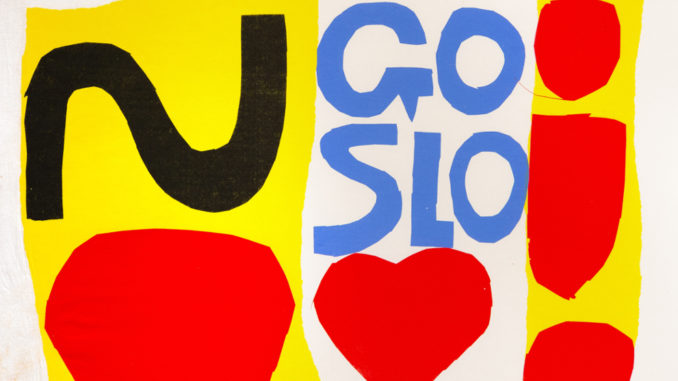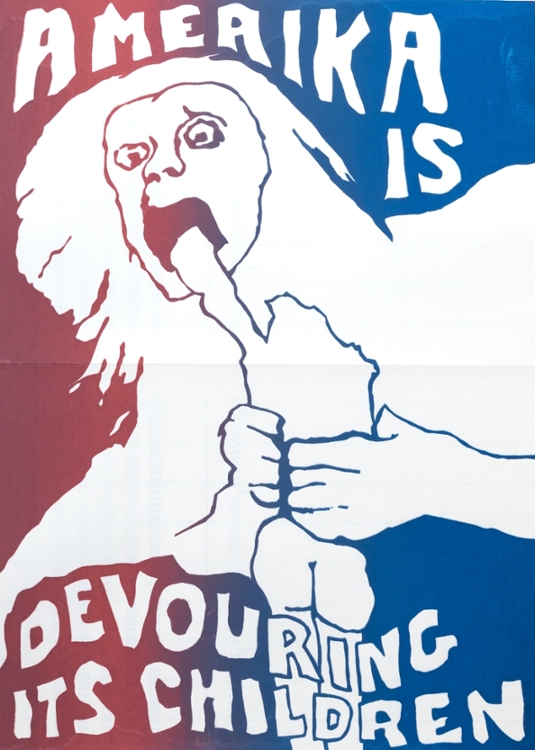
One of the most daunting aspects of spreading information is getting people to actually notice and pay attention to, perhaps act upon, the image or combination of words.
The current online exhibition at the Janet Turner Print Museum at Chico State, Social Commentary: Prints and Politics, addresses this challenge as it pertains to art that communicates messages of politics and protest.
“Printmaking possesses the unique ability to disseminate information camouflaged as art,” reads a quote from artist Jessica Camponigro in the online program for the show. “Innately more egalitarian and accessible, and therefore less precious and valuable, the production of prints is often a community activity that can also easily enter the public sphere.”
In light of the current rise of social-justice activism and the constant bombardment of political messaging in America today, the exhibit offers a broad historical perspective and background to current multimedia efforts to share information.
The earliest works are seven highly detailed mid-18th-century engravings by English satirical artist William Hogarth, depicting the cultural vagaries and economic iniquities of London at the dawn of the era of mass communication via print.
There are a wide range of 20th-century examples, from Richard Hamilton’s 1970 “Kent State” serigraph to Judy Chicago’s colorful 1974 “Peeling Back.” Her lithograph features intimately feminine semi-abstract images that form an ornate mandala-like composition that also includes below it a literal subtext with the artist’s handwritten explanation: “In this, the transitional image, I ‘peeled back’ the structure to reveal the formerly hidden form. What a relief to finally say: ‘Here I am, a woman, with a woman’s body and woman’s point of view.’”

Making the argument that an image unaccompanied by text also can make a powerful statement is Kiki Smith’s “Still” (2006), an “etching/spit bite/aquatint/softground/hardground” image of two legs and the soles of a pair of dirty feet emerging from beneath an ambiguous drapery that may be the edge of a blanket, a dress or a body bag. The bleak simplicity and the mystery of a figure that appears to be lying face down—though not fully in view—seems to imply a death or other scene of humanity lost.
In her 1960s print work, Corita Kent combined words with simple but eye-catching color designs to elicit reaction to social issues. In this exhibit, her 1963 serigraph, “Go Slo, Luke 2:14-51” may initially compel the viewer to ask, “Why should I?” That question is answered if one heeds the advice and takes time to enjoy the vibrant primary colors and engage with the playful design of the print.
More directly confrontational, both graphically and textually, are the pieces presented in the “Berkeley Political Posters” section of the exhibition. Composed partly of works that [local activist] Wayne Pease acquired in Berkeley in 1970 and later donated to the museum, this collection includes examples of prints from the era of Vietnam protests, the Kent State killings, the formation of Black Panthers, and Berkeley’s Free Speech Movement of the mid-1960s, sometimes printed on paper pulled and repurposed from university office garbage cans. One poster presents a screenprinted, red-white-and-blue image derived from Francisco Goya’s painting “Saturn Devouring his Son” overlain with the text, “Amerika is Devouring Its Children,” thus unifying high art from the early 19th century with the very real concerns of the draft-bound young men protesting the war in Vietnam.

Of particular value and interest to visitors of the online gallery is the extensive list of links to source materials offered at the bottom of each of the three sections of the exhibition’s web page. Links range from highly academic essays such as Michael Rossman’s 1986 “Evolution of the Social Serigraphy Movement In the San Francisco Bay Area, 1966-1986,” to an “Anti-Racist Print & Printmaking” page and a simple Instagram link to “Printmaking As Resistance”
(@printmakingasresistance).
The museum also provides an interactive “virtual tour” of the exhibition, complete with spacey electronic soundtrack, that is worth checking out if only for its technical “Wow” factor. The viewer can zip around from wall to wall in the gallery by navigating the 4K-resolution video with a mouse or touchpad. However, the three individual online slideshows of the art provide the most detailed close viewing of each piece.
The online program suggests that “printmakers use their art to deepen the conversation about social justice and so much more,” and there is plenty worth commenting on in this engaging exhibit of pictures and words.


Be the first to comment